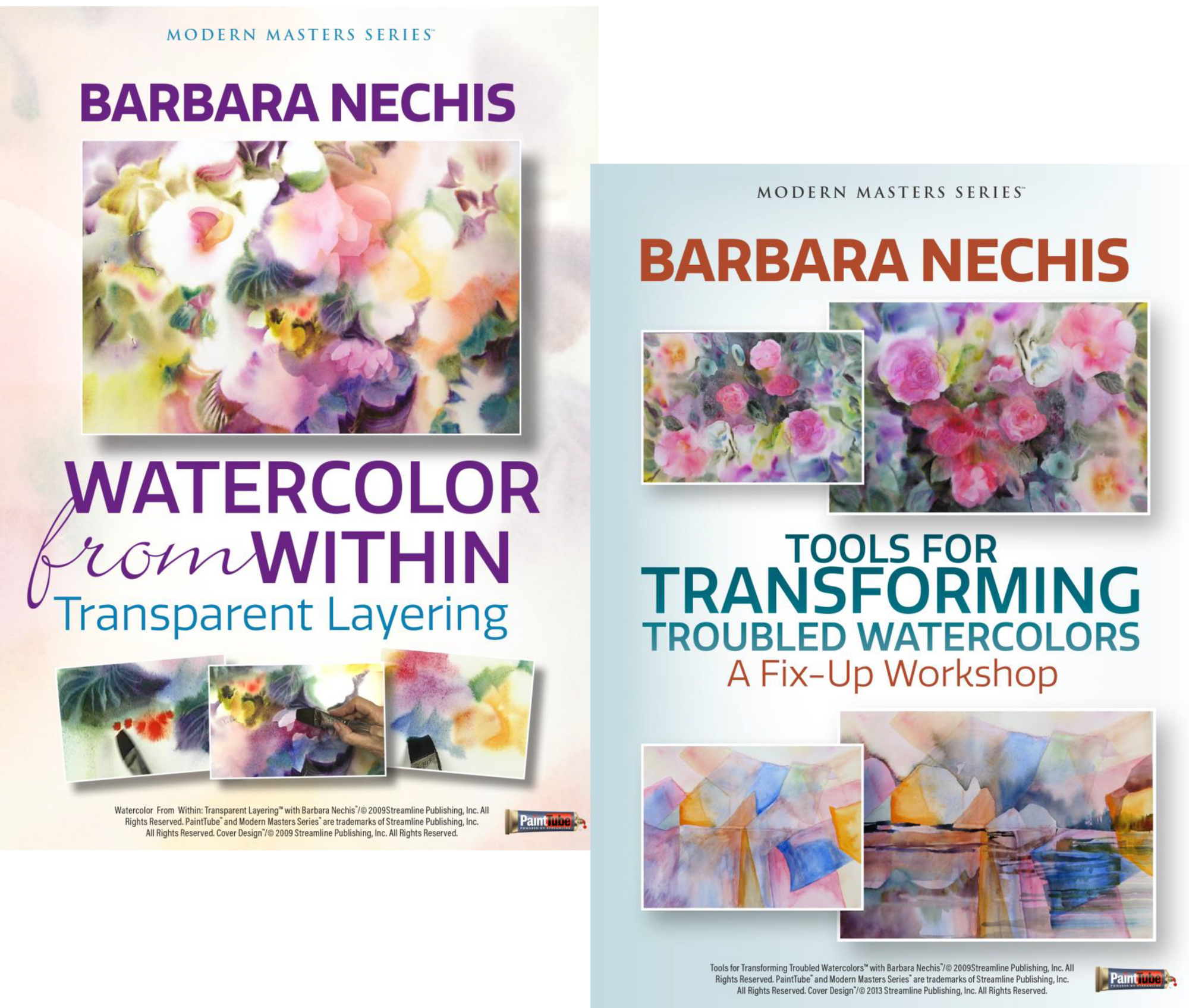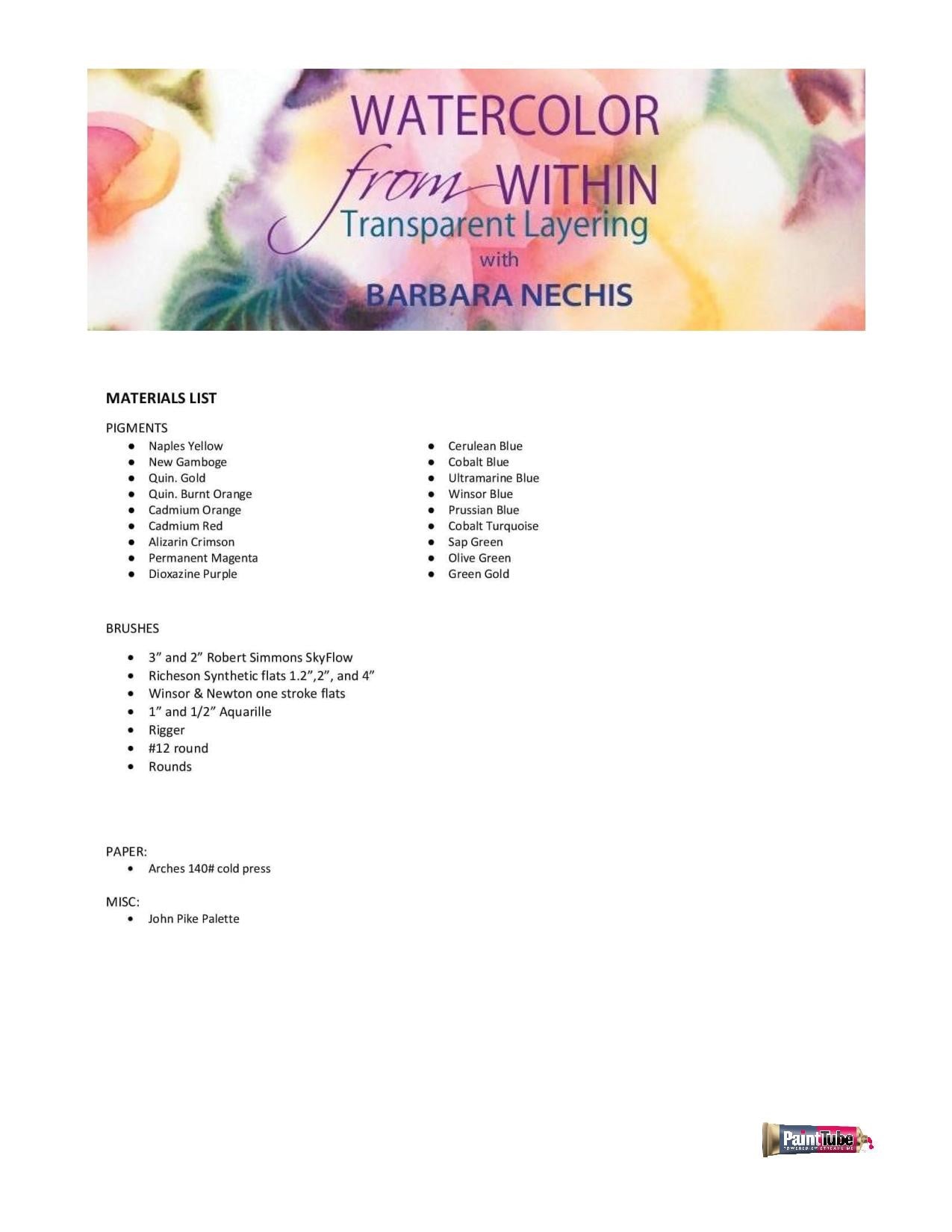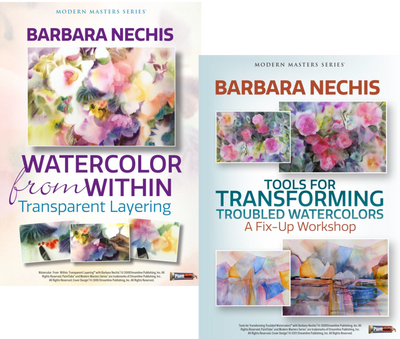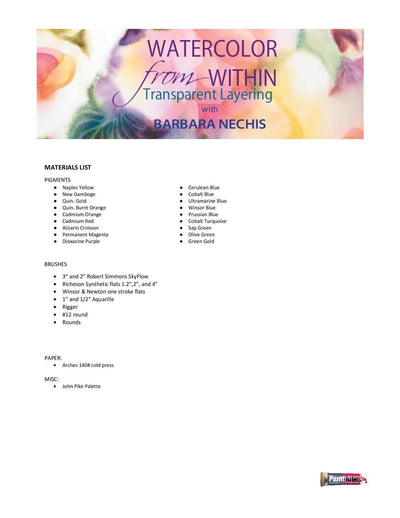Watercolor from Within: Transparent Layering
If you've ever wished you could skip the thumbnails and dive head first into watercolor than join Barbara Nechis and paint "Watercolor from Within." Drawing technique is important, but sometimes you just want to paint.
This watercolor painting video focuses on building your confidence with your paint. In her video painting lessons, Nechis instructs students to fully use the watercolor painting technique wet-into-wet to create a stunning floral scene. Without a reference photo, physical subject, or sketched outline, Nechis demonstrates how to paint from within using a single spot of magenta paint placed confidently in the center of the page.
Using memory and emotion as her only inspirations, Nechis works outward from this center. She uses the flowing paint as her guide for what should come next. During Barbara's art lessons, students will learn how to make composition decisions quickly and confidently. Nechis emphasizes the importance of balancing repetition and variety. She shows students how to paint with both transparent and opaque pigments, and she teaches you how to play with hard and soft edges.
Nechis encourages students to avoid mixing color on the page but instead blends by using the watercolor technique of double-loading wide, square brushes and then tilting her paper to make pigment flow. As the demonstration progresses, Nechis explains her techniques for transforming a loose, direct scene into an intricate and layered composition. Instead of being locked into a predetermined composition, students will learn how to respond to what happens on the paper. This frees emotion during the creative process, and it will allow you to relay your passion for a subject on the page.
VIDEO EXTRA "Adding Variety to your work"
In this clip from her video workshop, Watercolor from Within, Barbara Nechis direct paints major new elements in an abstract floral composition. Barbara uses the wet-into-wet technique to create unpredictable edges and blur the boundaries between the new elements and existing shapes on her paper. Barbara introduces new colors and changes value frequently to create variety in her design.
More:
With Barbara Nechis's wet-into-wet technique, all you need to get started is the courage to make your first stroke. In this watercolor workshop, Barbara works outward from a single spot of permanent magenta using memory, emotion, and the flowing paint on her paper to guide an inspired floral design.
You'll learn to make principled design decisions confidently and quickly as you develop a loose, direct painting into an intricate, layered composition. Barbara paints intuitively, responding to to what happens on the paper rather than planning ahead with sketches or reference material. Her composition reflects her feelings about her subject instead of literally representing the flowers.
Barbara emphasizes balance between repetition and variety. She corrals transparent color with opaque pigments and contrasts hard-edged elements with wet-into-wet petals. She avoids mixing on her palette but encourages blending by double-loading wide, square brushes and tilting her paper to make pigment flow.
Tools for Transforming Troubled Watercolors
Don't toss your problem watercolors! Let Barbara Nechis show you how to use them as a learning opportunity.
Barbara demonstrates on nine paintings donated by students. She will walk you through her considerations when dealing with a problem piece. She addresses issues like color harmony, linkage, color dominance, and contrasts. You see her vary sizes, cluster shapes, and glaze over colors. She even uses a water bath to totally submerge a painting in order to lift color. The results are not meant to be frame worthy pieces. The value is in what you learn for the next time you face a similar situation. So collect those "disasters" and put them to good use with Barbara Nechis!
ARTIST'S STATEMENT
![]()
I call my work abstract realism. My work falls into a small category between realism and abstraction. Viewers who are wedded to either end of the spectrum are not always able to relate to my work. All of the forms are real to me and come from nature but I usually push them into shapes that could occur but are not necessarily recognizable to others. I hope that these shapes add up to a landscape that most people understand.
I don’t paint with an image in mind. It evolves as I work. The paper and paint seduce me. I rarely start with a subject in mind but anything to do with nature entices me. I never have a clear idea but I work from problems and spend a great deal of time analyzing what is not working and how I can fix it. Unlike many other mediums, watercolor does some of the work for you. It also produces unexpected effects that can’t be repeated so that each painting becomes special.
I use watercolor so that it looks fluid and creates an illusion that the paint arrived magically. By allowing the paint and water to interact and react I celebrate what watercolor does that is unique. The medium does much of the work for me.
My style keeps evolving but my growing vocabulary of shapes is subtly recognizable. There can be an advantage to having a recognizable style but it can also become a trap and if there is no evolution or change the work can look dated. I like it when people get what I am trying to say but it does not affect how I paint.
The true subject of my paintings is probably the act of painting itself. I do get turned on by the shapes in nature and the shapes that I put on the paper reflect this. I love it when I begin to make up a shape and then recognize that it imitates something I have seen in nature. It is important for me not to paint purely for aesthetic reasons. What I try to say has a spiritual component based on my awe of nature.
For me, a good painting is a balance between chance, intuition and technique.
My compositions are usually complex and involve many different objects and shapes. This results in paintings that take time for the viewer to fully discover. When a painting unfolds over time, it makes the work feel fresh forever.
